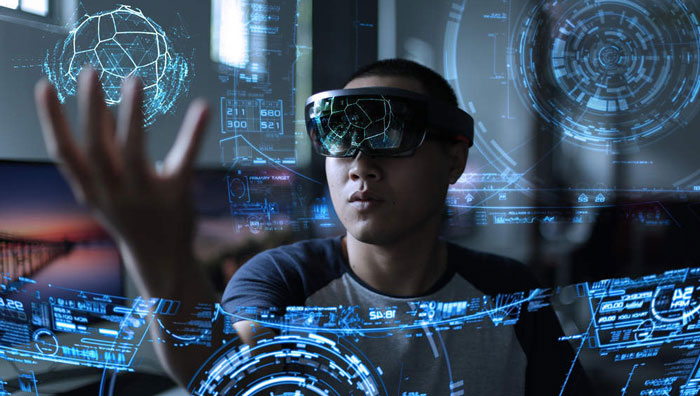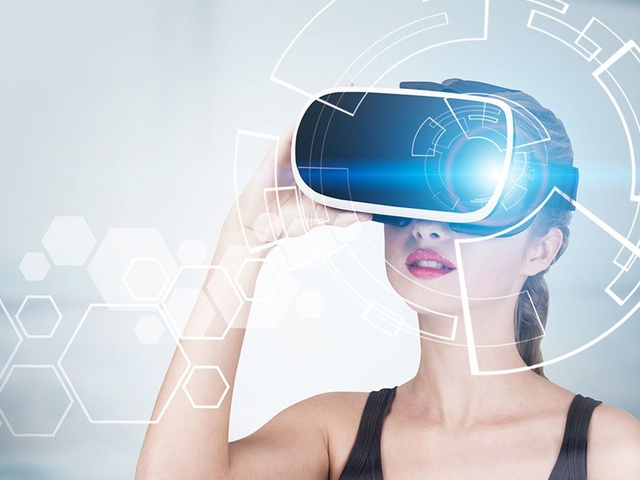Modern technologies are developing rapidly, and among the most promising innovations are augmented reality (AR) and virtual reality (VR). These technologies have the potential to fundamentally change the way we interact with the world around us, pushing the boundaries of entertainment and education. In this article, we will look at how AR and VR affect these areas, what benefits they offer, and what challenges may arise in their development.
Augmented Reality (AR)
Definition and features
Augmented reality (AR) is a technology that overlays digital information on the real world, improving the perception of the environment. Unlike virtual reality, which creates a completely artificial world, AR integrates virtual objects into a real-world context.
Entertainment applications
In entertainment, AR has already gained popularity with apps like Pokémon GO, which allows users to search for and interact with virtual creatures in the real world. AR is also used in mobile games and apps such as Snapchat and Instagram, where users can add virtual effects and filters to their photos and videos.
Another significant area is AR projection shows and theatrical performances, where virtual elements can interact with actors and scenery, creating unique spectacular effects. In addition, AR is actively used in events and exhibitions, providing participants with the opportunity to interact with interactive exhibitions.
Application in training
In the educational field, AR can significantly improve the learning experience by providing interactive and visual tools for students. For example, AR can be used to visualize complex concepts, such as molecules in chemistry or anatomical structures in biology, making the material more accessible and understandable.
AR can also support learning through virtual field trips and simulations, allowing students to "visit" historical sites, explore planets, or interact with ancient artifacts without leaving the institution. This technology is also useful for technical training and vocational training, offering simulations and training in real-world scenarios.
Virtual Reality (VR)
Definition and features
Virtual reality (VR) immerses the user in a completely artificial world created with the help of computer technology. Using special devices such as VR headsets and controllers, users can interact with three-dimensional surrounding worlds, which provides a deeper immersive experience.
Entertainment applications
VR has a wide range of applications in the entertainment industry. Video games such as Beat Saber and Half-Life: Alyx provide unique and immersive gaming experiences, allowing users to fully immerse themselves in the gameplay and interact with virtual worlds.

Virtual cinemas and concerts are also becoming increasingly popular, providing the opportunity to experience the events to the fullest and with the maximum level of immersion. Users can sit in a virtual cinema hall, watch a show, or even travel to virtual locations from the comfort of their homes.
Application in training
In educational institutions, VR opens up new horizons for learning. Virtual simulations can be used to train doctors, engineers, and other professionals, offering the opportunity to practice in a safe and controlled environment. For example, medical students can perform virtual surgeries, and engineers can test designs and prototypes.
VR also provides the opportunity to create virtual laboratories and workshops where students can experiment and solve problems without the need for physical equipment. Virtual field trips and historical reenactments allow students to explore history and culture in an interactive way.
Benefits and challenges
Advantages
- Interactivity and Immersion: AR and VR provide a high level of interaction and immersion, making learning and entertainment more engaging and effective.
- Accessibility: These technologies can provide access to information and experiences that would not be available in real life. For example, training in remote locations or virtual tours.
- Safety: VR allows you to practice in complex and potentially dangerous situations without a real risk to life and health.
Calls
- High costs: The development and implementation of AR and VR technologies can be expensive, which limits their availability to some organizations and users.
- Technical limitations: The quality and effectiveness of AR and VR depend on the technical specifications of the devices and software, which can affect the user experience.
- Ethical and social issues: Immersion in virtual worlds can cause problems with social isolation and addictions. There are also questions about privacy and data security.
The future of technology
With the development of augmented and virtual reality technologies, we can expect them to become even more integrated into our daily lives. AR and VR are expected to be used in a wider range of applications, from medicine and science to art and business.
The joint use of AR and VR will also contribute to the creation of new forms of interaction and improve the user experience. For example, the combination of AR and VR can lead to the creation of hybrid environments where users will move between virtual and real worlds.
Conclusion
Augmented and virtual reality technologies are powerful tools that have the potential to change the way we think about entertainment and education. They open up new opportunities for learning and creating unique experiences, but also require a number of challenges. The future of AR and VR looks promising, and with the advancement of technology, we can expect their deeper adoption and transformation of various aspects of our lives.
